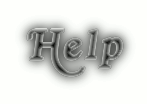CSS
A CSS (cascading style sheet) file allows you to separate your web
sites (X)HTML content from it’s style. As always you use your (X)HTML
file to arrange the content, but all of the presentation (fonts, colors,
background, borders, text formatting, link effects & so on…) are
accomplished within a CSS.
At this point you have some choices of how to use the CSS, either internally or externally.
Advantages of CSS:
- CSS saves time: You can write CSS once and then reuse
same sheet in multiple HTML pages. You can define a style for each HTML
element and apply it to as many Web pages as you want.
- Pages load faster: If you are using CSS, you do not need
to write HTML tag attributes every time. Just write one CSS rule of a
tag and apply to all the occurrences of that tag. So less code means
faster download times.
- Easy maintenance: To make a global change, simply change the style, and all elements in all the web pages will be updated automatically.
- Superior styles to HTML: CSS has a much wider array of
attributes than HTML so you can give far better look to your HTML page
in comparison of HTML attributes.
- Multiple Device Compatibility: Style sheets allow content
to be optimized for more than one type of device. By using the same
HTML document, different versions of a website can be presented for
handheld devices such as PDAs and cell phones or for printing.
- Global web standards: Now HTML attributes are being deprecated and it is being recommended to use CSS. So its a good idea to start using CSS in all the HTML pages to make them compatible to future browsers.



